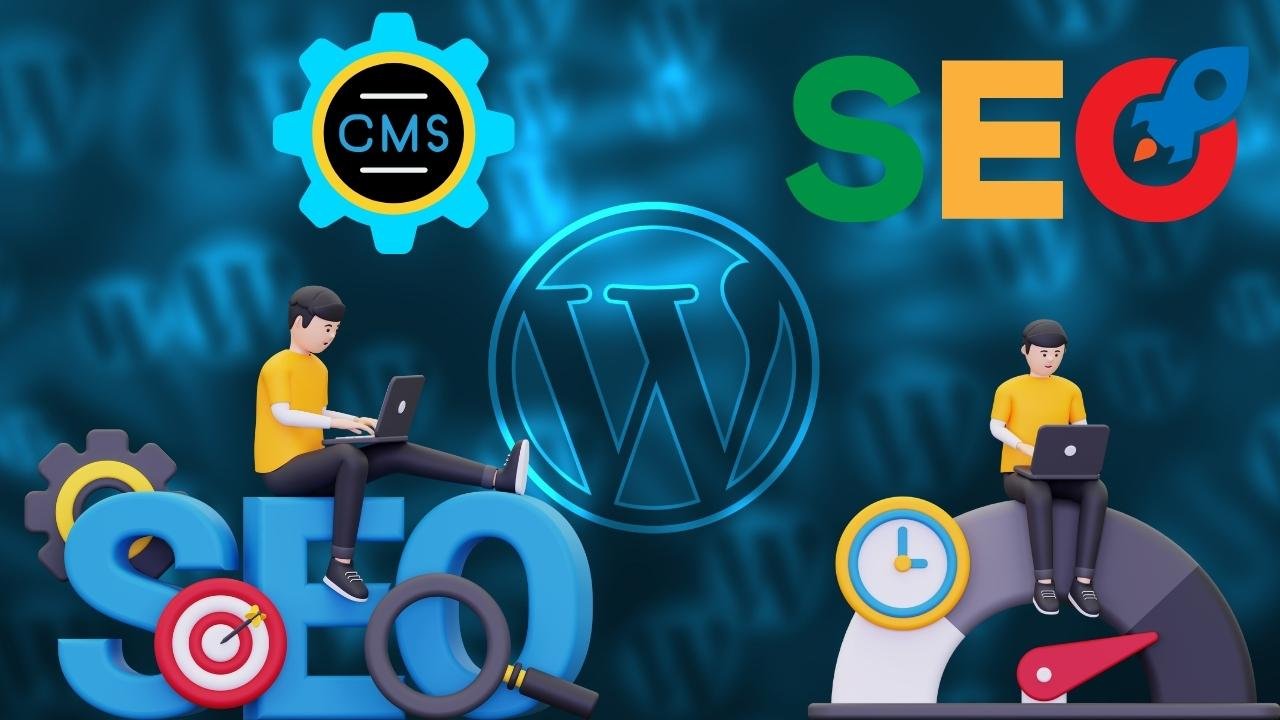Discover how website speed and clean code directly impact your WordPress SEO. Learn performance optimization tips, coding best practices, and how to build lightweight themes for higher Google rankings in 2025.
Introduction
In the competitive world of online visibility, website speed and clean code are no longer optional—they’re essential for SEO success. Whether you run a WordPress blog, WooCommerce store, or digital agency site, Google’s algorithms now reward fast-loading, well-coded websites that deliver exceptional user experiences.
If your site loads slowly or is bogged down by bloated code, it won’t matter how great your content or backlinks are—Google will push you down the rankings. In this post, we’ll explore why speed and clean code matter for WordPress SEO, and how developers, designers, and theme creators can optimize both for maximum performance.
1. How Website Speed Impacts SEO
Website speed directly affects how Google crawls, indexes, and ranks your site. The search giant has confirmed that Core Web Vitals—metrics that measure loading, interactivity, and visual stability—are now major ranking factors.
Key Core Web Vitals
-
Largest Contentful Paint (LCP) How fast your main content loads (ideal: <2.5s)
-
First Input Delay (FID) How quickly users can interact (ideal: <100ms)
-
Cumulative Layout Shift (CLS) Visual stability while loading (ideal: <0.1)
A theme or plugin that loads unnecessary scripts, fonts, or bulky libraries can cause your Core Web Vitals to fail—hurting both SEO and user trust.
📉 Slow Speed = Lower Rankings
Research shows
- Pages that load in 1 second have 3x better conversion rates than those taking 5 seconds.
- A delay of just 1 second can reduce page views by 11% and customer satisfaction by 16%.
Speed isn’t just a UX metric—it’s a ranking currency.
2. Why Clean Code Is the Foundation of SEO
Clean code is the silent backbone of a fast and stable WordPress website. It ensures that search engines can crawl your content efficiently and that your site remains stable as it scales.
What Is “Clean Code” in WordPress?
Clean code means
- Following WordPress Coding Standards (PHP, JS, CSS)
- Avoiding redundant or nested functions
- Using semantic HTML (proper tags for headings, lists, etc.)
- Maintaining minimal dependencies and optimized queries
- Ensuring no inline clutter, duplicate scripts, or unnecessary loops
Search engines love structure and consistency. Well-organized code makes it easier for bots to interpret your content—and helps users experience a faster, smoother website.
3. The Relationship Between Speed, Code, and SEO
Speed and clean code work hand in hand
- Clean code reduces render-blocking assets → improves load speed.
- Lightweight structure enhances Core Web Vitals → boosts SEO.
- Fewer database calls and scripts → lowers Time To First Byte (TTFB).
When a theme is written efficiently, it loads faster, reduces server load, and keeps bounce rates low—all signals Google rewards.
For example, a Kaddora Tech block-based theme that uses optimized theme.json, minimal CSS, and native WordPress blocks will outperform a heavy builder-based site that loads multiple frameworks and external scripts.
4. Common Causes of Slow WordPress Websites
Understanding what slows down your site helps you fix it faster. The most common culprits include
-
❌ Bloated themes packed with unused features.
-
❌ Too many active plugins running unnecessary queries.
-
❌ Large unoptimized images.
-
❌ Non-minified CSS and JS files.
-
❌ Poor hosting or lack of caching.
-
❌ Render-blocking scripts and third-party embeds.
-
❌ Unclean database with post revisions, transients, and spam.
Each of these issues creates delays and increases server response times, leading to SEO losses.
5. Best Practices for Writing Clean WordPress Code
If you’re developing custom themes or plugins, follow these best practices to keep your code efficient
✅ Follow WordPress Coding Standards
Adopt PHP, JavaScript, and CSS guidelines from developer.wordpress.org/coding-standards.
✅ Use Proper Hooks and Filters
Instead of editing core files, use actions and filters to extend functionality safely.
✅ Keep Functions Modular
Write reusable, well-documented functions instead of repeating logic throughout templates.
✅ Avoid Global Variables
Use local scopes and pass data through hooks or class properties.
✅ Minimize External Dependencies
Load only the libraries you truly need—don’t import entire frameworks for small features.
✅ Sanitize and Escape Data
Always sanitize inputs (sanitize_text_field) and escape outputs (esc_html__) for clean, secure, and SEO-friendly markup.
Clean code isn’t just elegant—it’s efficient, secure, and sustainable.
6. Techniques to Improve WordPress Speed
Improving site performance involves both front-end and server-level strategies. Here are the most effective optimizations
Theme Optimization
- Use a lightweight FSE or hybrid theme (like Kaddora Multipurpose) built for blocks.
- Remove unused CSS and scripts.
- Load Google Fonts locally to reduce DNS lookups.
Caching
- Install caching plugins like WP Rocket, LiteSpeed Cache, or W3 Total Cache.
- Use browser caching and preloading for repeat visitors.
Database Optimization
- Clean post revisions and transient options using WP-Optimize.
- Avoid heavy SQL queries in templates.
Image Optimization
- Compress images using TinyPNG, Smush, or ShortPixel.
- Serve responsive images with srcset attributes.
Content Delivery Network (CDN)
- Use Cloudflare or BunnyCDN to serve static files globally.
- This reduces latency and improves load times worldwide.
Hosting
- Choose a fast WordPress-optimized host (like SiteGround, Kinsta, or Hostinger Cloud).
- Opt for SSD-based servers and PHP 8+.
7. How Speed and Code Affect User Experience (UX)
Fast and well-coded sites create positive user experiences, directly improving
-
Engagement rates (users stay longer)
-
Conversion rates (especially on WooCommerce)
-
Mobile responsiveness (Google prioritizes mobile-first)
-
Accessibility (clean code is easier for screen readers)
Google’s algorithm tracks user behavior metrics such as time on page, bounce rate, and click-through rate.
If your website feels fast and intuitive, users engage more—and search engines take note.
8. Clean Code and Structured Data for SEO
Clean code allows for easier integration of structured data (JSON-LD). This markup helps Google understand your content type—products, articles, reviews, or services.
Example for a blog post
<script type=”application/ld+json”>
{
“@context”: “https://schema.org”,
“@type”: “BlogPosting”,
“headline”: “Why Speed and Clean Code Matter for WordPress SEO”,
“author”: { “@type”: “Person”, “name”: “Kaddora Tech” },
“datePublished”: “2025-10-20”,
“publisher”: { “@type”: “Organization”, “name”: “Kaddora Tech” }
}
</script>
Structured data boosts your visibility with rich snippets—stars, pricing, FAQ, and more—improving click-through rates.
9. Tools to Measure Speed and Code Quality
Use these tools to analyze your WordPress performance and coding quality
Purpose | Recommended Tool |
Page Speed | Google PageSpeed Insights |
Mobile Speed | Lighthouse (Chrome DevTools) |
Code Quality | PHPCS (PHP CodeSniffer) |
CSS Optimization | PurgeCSS / UnCSS |
Database Optimization | WP-Optimize |
CDN Monitoring | Cloudflare Analytics |
These help identify bottlenecks, measure Core Web Vitals, and refine your site performance continuously.
10. The Future of Speed and SEO in WordPress (2025 and Beyond)
With Google’s AI-driven ranking systems (like Search Generative Experience), speed and structure will become even more crucial.
WordPress core updates (6.8+) are already focused on
- Reducing render-blocking assets
- Making block themes faster
- Improving lazy loading and asset bundling
In the near future, AI-powered SEO crawlers will favor
- Clean codebases
- Structured schema
- Lightning-fast Core Web Vitals
If your site nails these, you’ll be algorithm-proof and future-ready.
Conclusion
Speed and clean code aren’t just developer preferences—they’re SEO superpowers. Together, they define how search engines and users perceive your site.
A well-optimized, lightweight WordPress theme
- Loads quickly
- Improves Core Web Vitals
- Enhances accessibility
- Boosts user engagement
- Increases Google rankings
Whether you’re building from scratch or optimizing an existing project, always remember:
Fast sites rank better, and clean code keeps them there.
Top 10 FAQs
-
Why does website speed matter for SEO? Because Google considers speed a ranking factor. Faster sites improve user experience and rank higher in search results.
-
What is considered a fast website? A site that fully loads in under 2.5 seconds on both desktop and mobile is considered fast and SEO-friendly.
-
How can I check my WordPress site speed? Use tools like Google PageSpeed Insights, GTmetrix, or Pingdom to test performance.
-
What is clean code in WordPress development? Clean code follows WordPress standards, avoids redundancy, and uses semantic HTML, improving both speed and SEO readability.
-
Can theme choice affect website speed? Yes. Lightweight themes like Astra, GeneratePress, or Kaddora Multipurpose load faster and score higher on SEO metrics.
-
How does JavaScript affect SEO and speed? Heavy or unoptimized JavaScript can delay rendering and block content visibility, lowering your speed score.
-
Does image optimization really matter? Absolutely. Compressed, responsive images can reduce load time by up to 40%.
-
Can caching plugins improve SEO? Yes. Caching reduces server response time and improves Core Web Vitals, boosting SEO performance.
-
Should I use a CDN for a WordPress site? Yes. A CDN delivers content faster globally and improves your site’s speed on mobile and desktop devices.
-
How often should I test and optimize my site? Monthly testing is ideal, especially after theme or plugin updates. Continuous monitoring keeps your SEO stable.

Monetising WordPress Themes & Plugins: Licence Models, Free-vs-Pro Strategy & Affiliate Marketing
Read More »
Theme Security Best Practices: Protecting Your Users and Building a Trusted Brand (2025 Edition)
Read More »





Leave a Reply